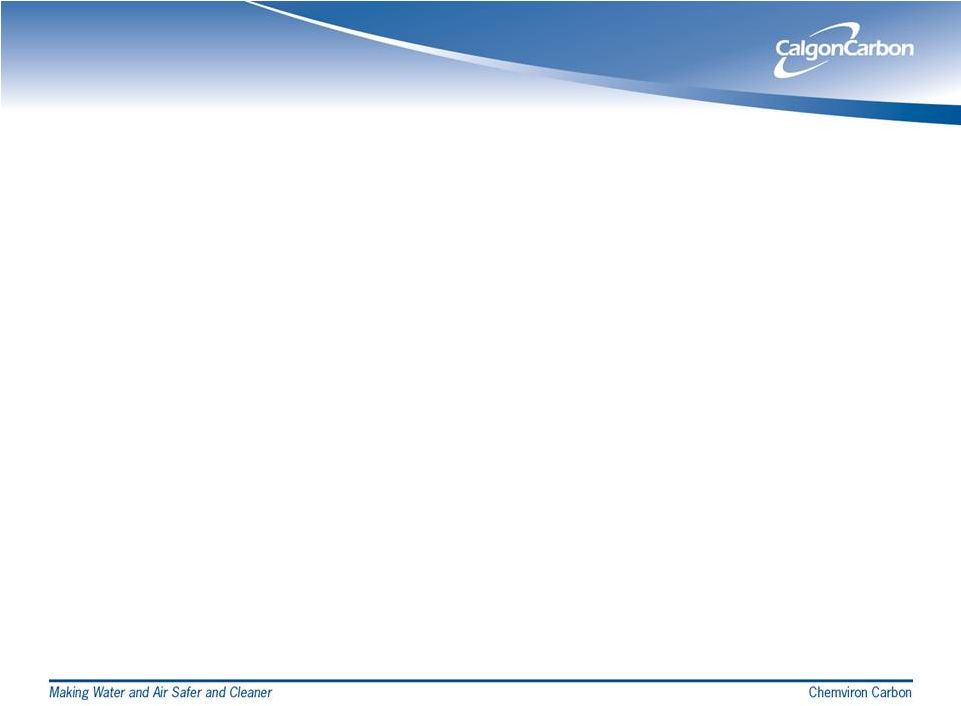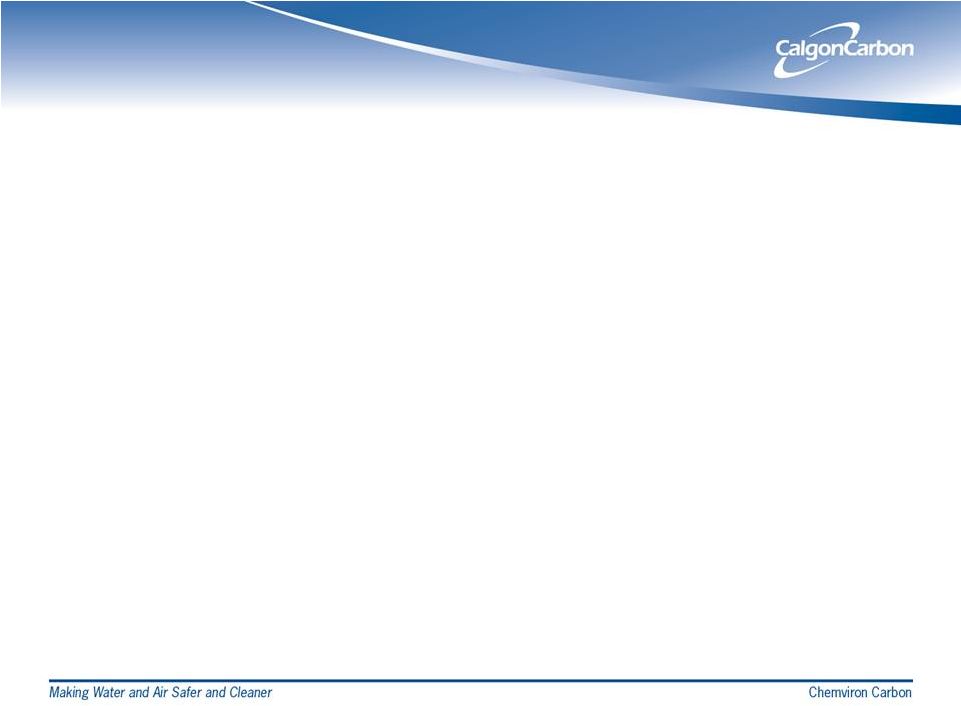Attached files
| file | filename |
|---|---|
| 8-K - 8-K - CALGON CARBON Corp | d314246d8k.htm |
| EX-10.1 - EX-10.1 - CALGON CARBON Corp | d314246dex101.htm |
| EX-99.1 - EX-99.1 - CALGON CARBON Corp | d314246dex991.htm |
 APPENDICES
Exhibit 99.2 |
 BALLAST WATER TREATMENT |
 3
Why Ballast Water Treatment?
The issue: Transfer of invasive species
via ships’
ballast water |
 4
Regulations Drive Market
Regulations
•
International Maritime Organization (IMO) adopted
International Convention for the Control and Management of
Ships’
Ballast Water and Sediments (BWMC)
•
Sets framework for legislation for 169 Member States
•
Ratification requires 30 signatories representing 35.0% of world’s
tonnage
•
33 signatories representing approximately 26.5% of the world’s
tonnage have ratified BWMC
•
Ratification of the BWMC expected to occur in 2012
•
U.S. Coast Guard finalizing rule:
•
Awaiting publication in Federal Register
•
Phase 1 expected to be similar to the IMO standard |
 5
GUARDIAN™
Value Proposition
•
Filtration -
Stacked Disk Technology
•
Advantages over other separation technologies
•
Less maintenance than screen filters
•
Flexible footprint
•
Cost competitive
•
Low operating cost < $0.02/C
3
M water/hour treated
•
Disinfection -
UV
•
Advantages
•
No chemicals required
•
Suitable for fresh water applications |
 DISINFECTION BYPRODUCTS |
 7
What Are Disinfection Byproducts?
Disinfection Byproducts (DBPs) form when disinfectants used to
treat drinking water react with Naturally Occurring Materials (NOMs)
in the water (e.g.; decomposing plant material).
Trihalomethanes
Chloroform
Bromodichloro Methane
NOMs + Cl
2
Halo Acetic Acids
Dichloroacetic Acid
Trichloroacetic Acid |
 8
Why
DBP Is Growth Opportunity For CCC?
•
GAC proven solution to prevent and/or eliminate DBPs
•
Market Size: 100+ MM lbs. GAC per year (or equivalent) by 2015
•
CCC is market leader
•
Supports reactivation strategy
•
Driver to convert municipalities to reactivation
•
NSF certifications currently at two plants
•
More virgin GAC available for other markets
•
CCC to build reactivation facility for Phoenix region which includes a
10- year reactivation contract (15-20 MM lbs.)
|
 MERCURY REMOVAL |
 10
Update: Mercury Removal For Coal-Fired
Power Plants
•
U.S. final Mercury and Toxic Standards Rule (Utility MACT)
issued by EPA 12/16/11
•
Requirements and timing as expected
•
Prevent 91% of mercury contained in coal from release to air
•
Compliance: February 2015 with possible extension
•
93 GW will require activated carbon injection by 2015 (EPA
estimate) |
 11
CCC
A Leader In Mercury Removal:
Innovative Products
•
FLUEPAC®
products in use at 18 plants (>9,000 MW
generating capacity)
•
Developed enhanced performance products over two years
•
New products reduce customer cost
•
Carbon injection rates 50% to 70% lower than alternative
products
•
Fewer deliveries = lower transportation costs
•
Lower particulate loading to ESP/baghouse
•
Less PAC in fly ash = more “concrete friendly”
|
